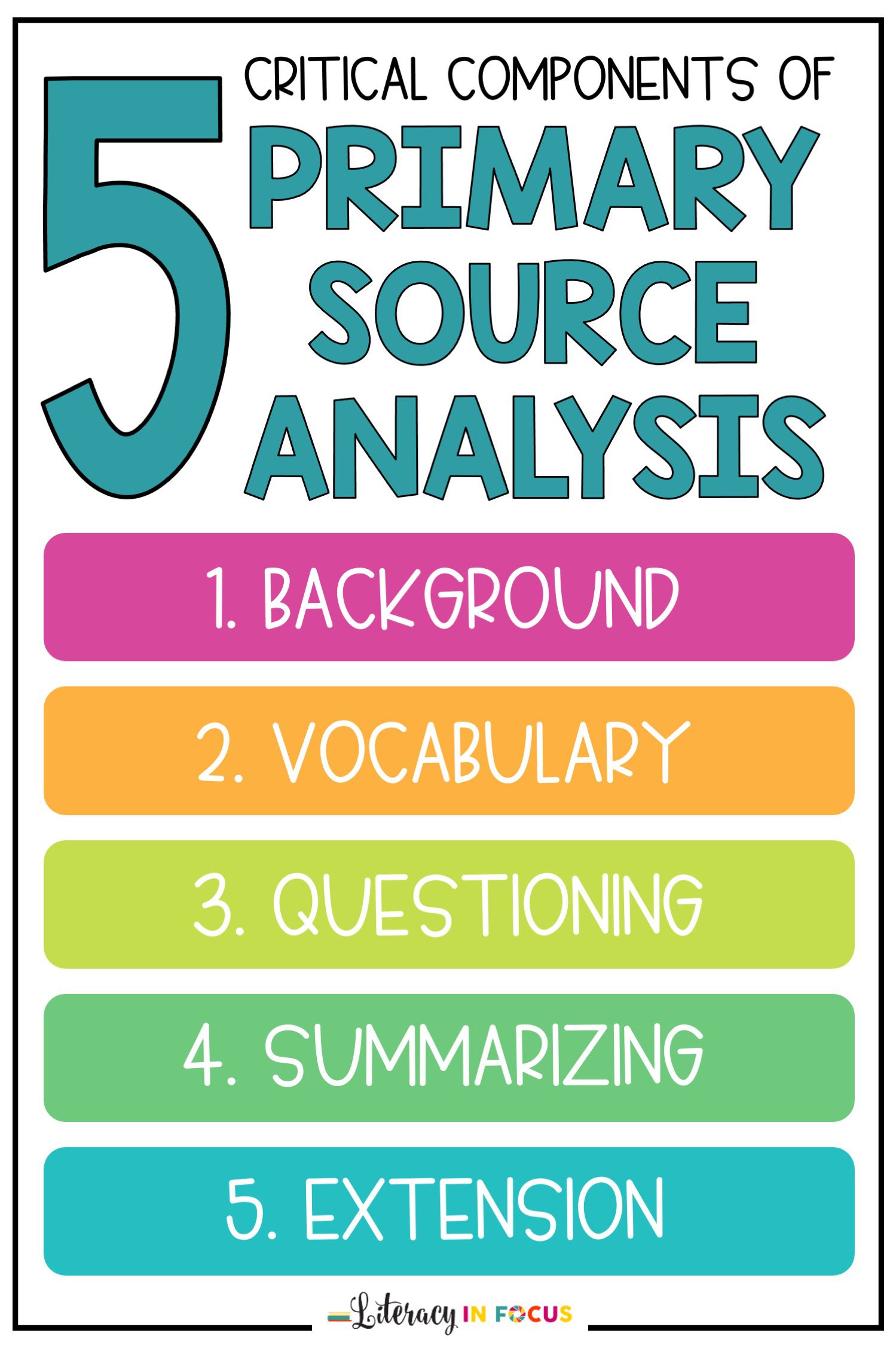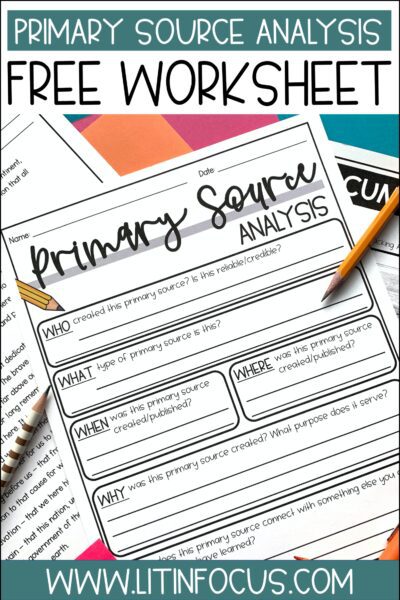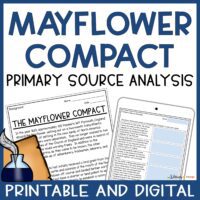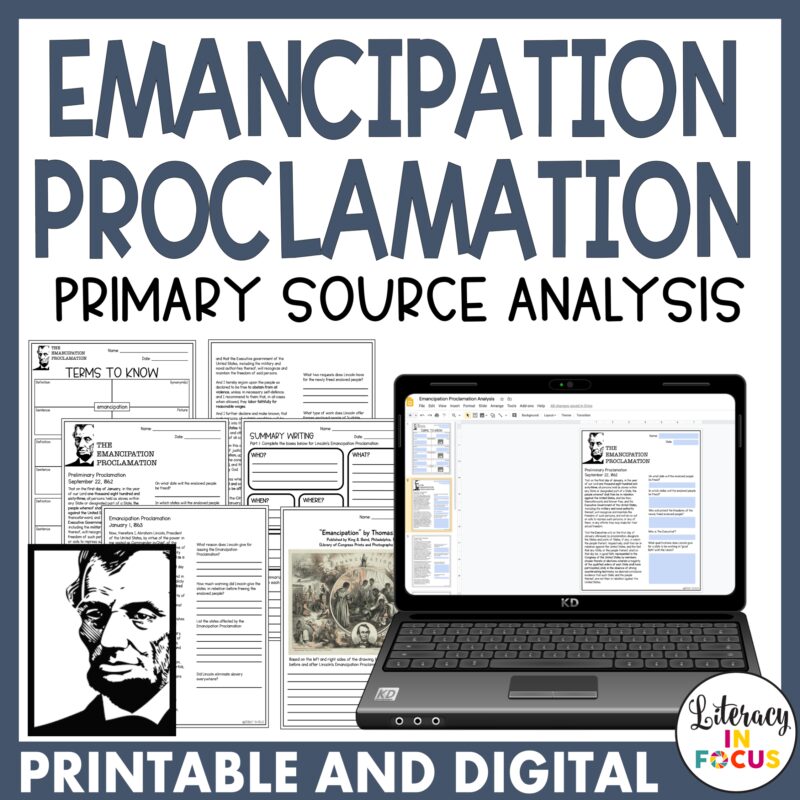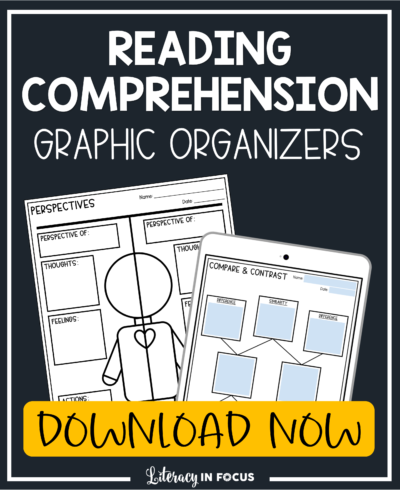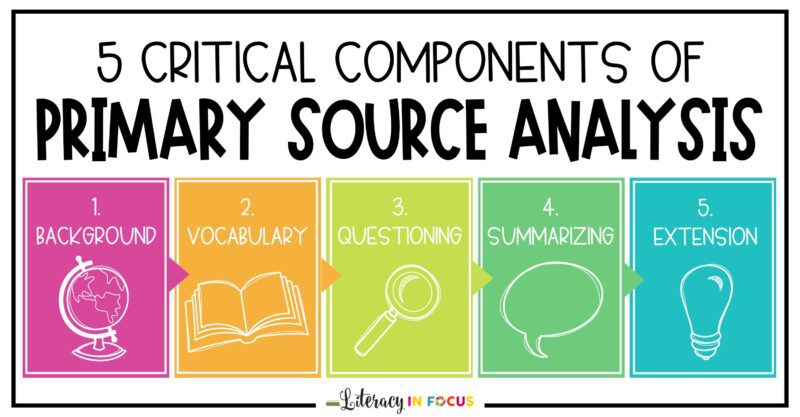
5 Critical Components of Primary Source Analysis
I think most of us would agree that teaching students how to analyze primary sources is an important part of any curriculum. As autonomous individuals in charge of our own teaching domains, we most likely differ in the quantity of primary sources we cover and the framework for our instruction of those sources. While there is no set standard for teaching students how to analyze a primary source, I do believe there are five useful components that, when applied thoughtfully, have the power to increase students’ overall depth of knowledge and critical thinking skills. The post below touches on each of the five components and how their addition to primary source analysis is beneficial.
Background
I understand that time is of the essence when it comes to designing meaningful and engaging lessons. There is not always time to provide students with a comprehensive background of the primary source being studied. That being said, it is critical to provide some sort of context for students to fully comprehend the depth and complexities of the source. Providing students with adequate background information will give them a strong foundation for analysis. True learning takes place when students make connections, which happens when students can dive deeper into the relevance of the primary source. The goal is to present students with just enough information to gain traction with the source, increase motivation, and develop the broader purpose for analysis.
Vocabulary
Front loading students with the meaning of terms essential for understanding the primary source will result in an increase in engagement and comprehension. It is important for students to have a general understanding of the tier-two and tier-three terms before taking on the task of analyzing the different components of the source. Additionally, if students are exposed to the terms prior to them being presented in the primary source, the meaning will be reinforced with context when students begin their analysis. As students build connections between known words and unknown words, they will develop a deeper understanding of the primary source. With a greater understanding of the academic vocabulary, students will also be more readily prepared to connect the source to prior knowledge and make relevant predictions, tapping into a higher levels of thinking, which is the ultimate goal of primary source analysis.
Guided Questioning
Guided questioning walks students through the process of analysis. It is critical for students to have a basic understanding of the information before moving on to higher order questioning and critical thinking. Well-crafted questions lead to new insights, generate discussion, and promote the comprehensive exploration of subject matter. Guided questioning can also serve as an assessment tool. Focusing on the lower level questions first will allow you to gauge the amount of time necessary for generating a foundational understanding of the primary source. Also, scaffolding learning with guided questions ensures that the information presented in the primary source is accessible to all students. Along the same lines as scaffolding, guided questioning enables you to differentiate instruction to meet the needs of all types of learners in your classroom. Ultimately, we want students to feel comfortable with the general concept of the primary source before requiring them to dive deeper into critical thinking. Click here to download a free printable and digital primary source analysis worksheet.
Summarizing
Summarizing is a difficult academic skill that takes time to master. Ideally, we want students to step back and see the bigger picture when they are attempting to craft a summary of a primary source. It is critical for students to be able to effectively synthesize the information presented in the primary source. Teaching general summarizing techniques will help students connect different pieces of the primary source to create a coherent level of understanding. Encouraging students to focus on the 5Ws (who, what, when, where, and why) will assist them in being concise, and help to avoid a verbatim re-creation of the source. Providing sentence frames or sentence starters will also help students who are struggling to write an accurate summary. Summary writing isn’t easy and will come with time and practice. Condensing the information presented in the primary source will assist students in building and developing their summary writing skills. Furthermore, if students are able to generate a succinct summary, they are prepared to move on to think more critically about the primary source.
Extension
Moving into the extension portion of analysis requires students to tap into higher levels of thinking. Among other domains, cognitively higher levels of thinking involve synthesis, inference, evaluation, and creativity. Examining the meaning, content, bias, purpose, and point of view presented in a primary source will help students to further develop their critical thinking skills as well as foster learner-led inquiry. Giving students time to think deeply about the content of the source has the potential to spill over into all areas of study. The practice of analyzing a primary source goes deeper than the source itself. Students will learn to develop skills for mastering necessary techniques for sustained attention and focus when presented with tasks that require cognitive rigor. Extension activities that support critical thinking, adaptation, and independent analysis will strengthen student resolve when completing cognitively rigorous tasks presented in the future.
Utilizing the five components mentioned above when studying primary sources will provide students with a rich understanding of the subject matter. In order to grow and develop into independent learners, students need to be equipped with the proper tools. Analyzing primary sources is one way to provide those tools. In doing so, you will be encouraging and fostering your students’ ability to think critically and solve problems.
Click on the images above to preview the primary source analysis lessons. Each lesson focuses on a different historical document that shaped US history. Everything you need for a comprehensive and in-depth analysis of each primary source is included. Along with the printable PDF version of the lessons, digital versions are also provided.
